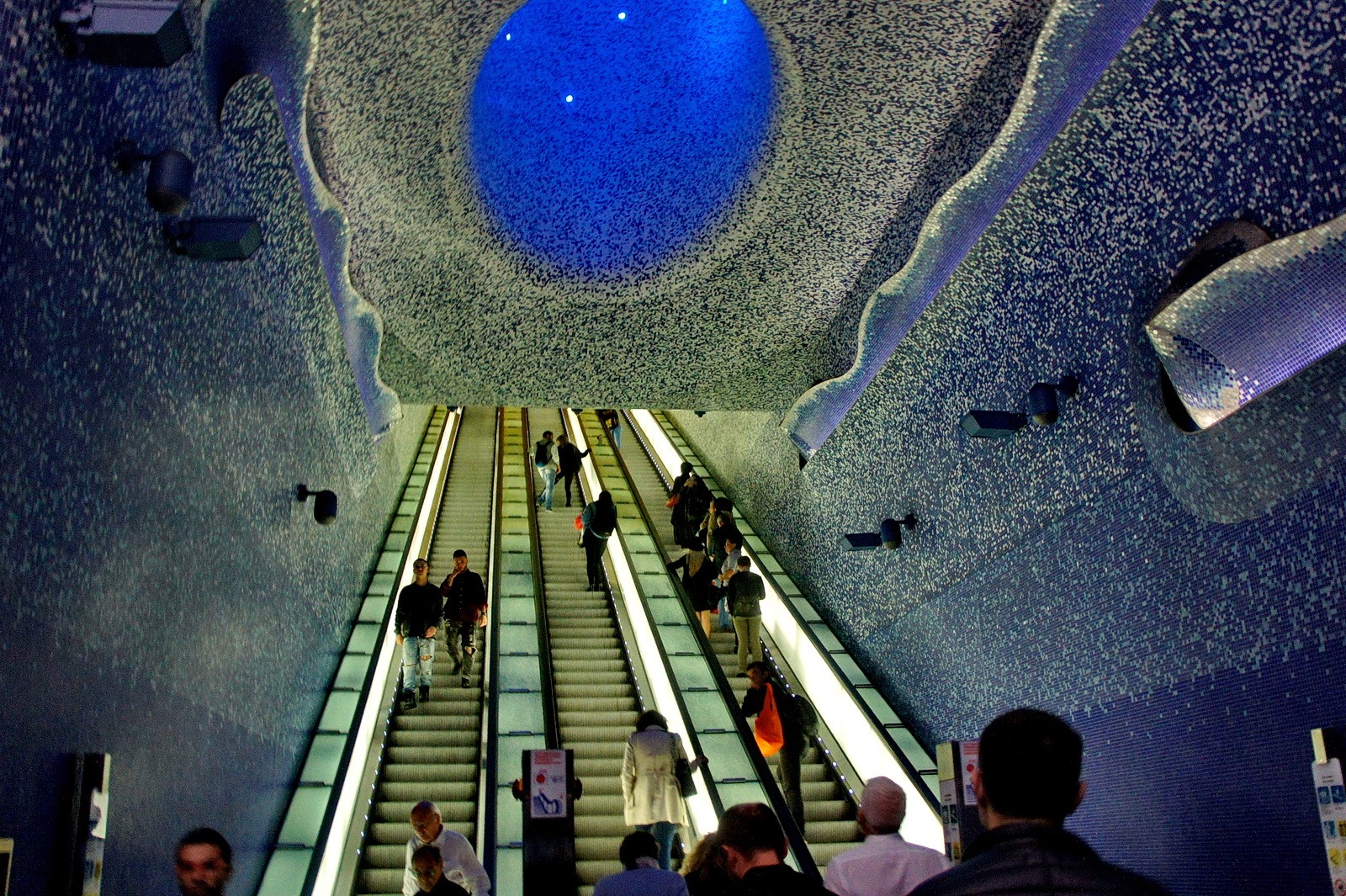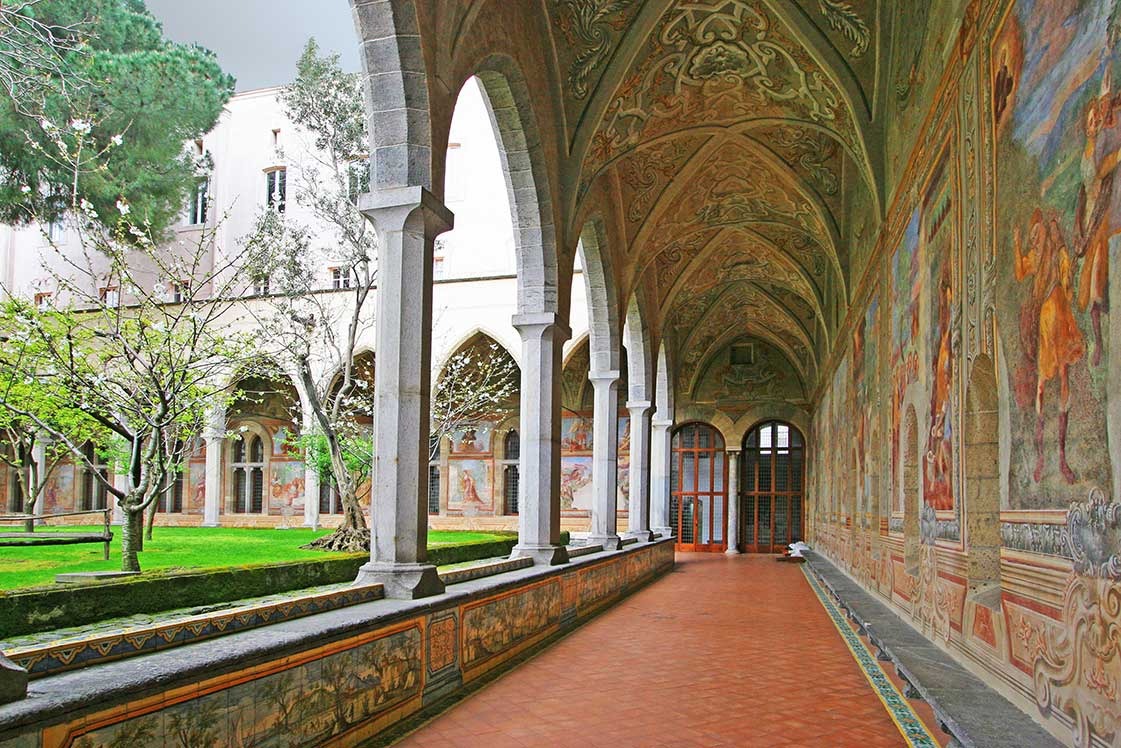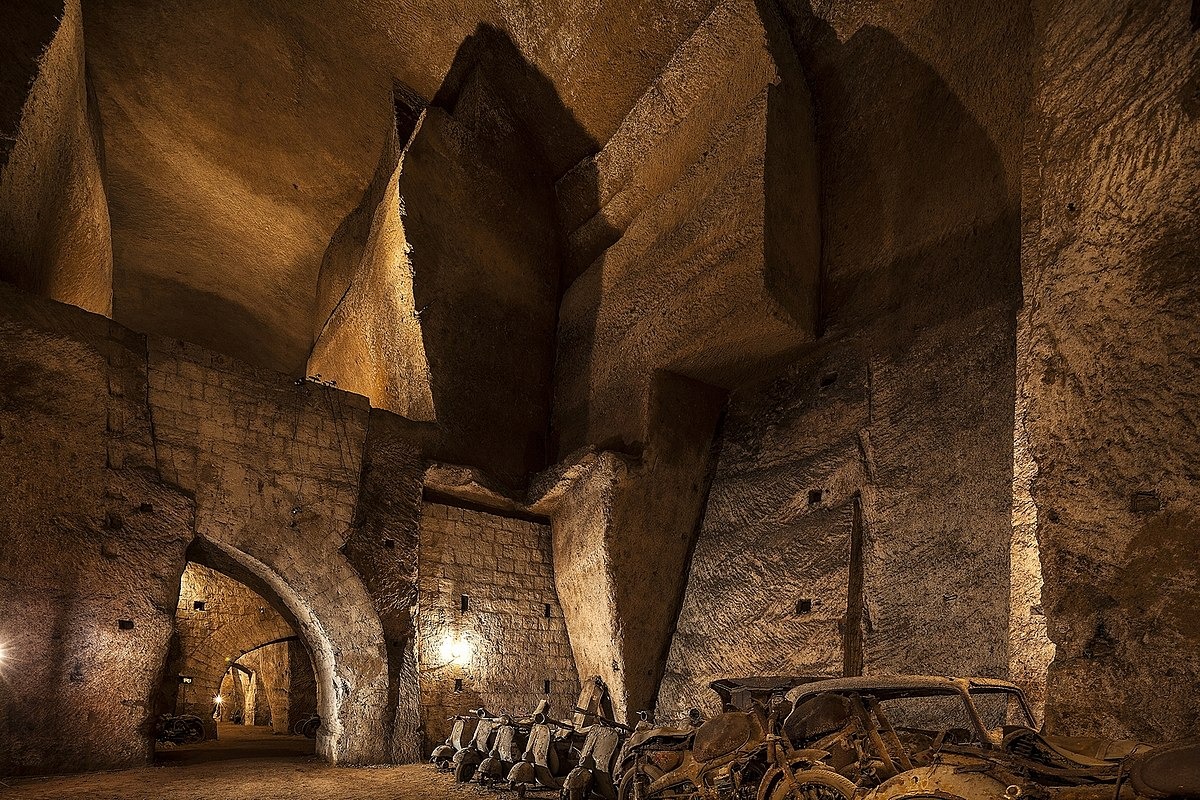Today we will talk about one of the most fascinating regions of Italy: Campania. It is a land rich in activities to do, with a very different layering: from the sea to the mountains, from trekking to museum activities. There are places that are not always listed in tourist guides, today we will help you discover 10 of these. Are you ready?
1. Catacombe di San Gennaro
The Catacombs of San Gennaro cover about 5600 square meters dug into the tuff of the hill of Capodimonte and host about 2000 loculi and 500 arcosoli.
The Catacombs of San Gennaro are the largest in southern Italy and are located under one of the most characteristic districts of Naples, the Rione Sanità. The Catacombs of S. Gennaro are composed of two levels not superimposed; in the upper one there are frescoes that indicate that in that same place the first Neapolitan bishops were buried. For everyone it is possible to visit this magnificent place even in the evening, through a tour that ends with a tasting of typical products.

2. Toledo Station
The dense metro network of Naples is home to some of the most beautiful stations in all of Europe. They are often assigned to architects and young artists who try to make them unique.
One of the most appreciated and certainly the most visited is that of Toledo, which takes its name from the Naples shopping street. A huge escalator crosses the depths of the station along a psychedelic blue and violet arc. It is a real project on the ground of Naples, called "Art Stations" in which the main idea is to change the vision of public transport into something different in order to penetrate the everyday life of tourists and commuters who go to work.
In the atrium of the Toledo station, before the dreamy atmosphere of the lower floors, you can also see the remains of the Aragonese castle that inspired the history of Naples.
In the Toledo station it is also possible to admire an installation equipped with two LED boxes that imitate and reproduce the image of the sea and the waves.
3. Casa Vanvitelliana
The original name is "Real casino Borbonico del Fusaro". It is a jewel of late Baroque architecture, a destination for those who prefer a romantic walk at sunset. It is located in Bacoli, in the province of Naples, and was once a reserve of poop and fishing of the Bourbons. As well as many other artistic realities, the house is open thanks to the work of some volunteers who since 1978 have been struggling to keep it open. The entrance ticket is fixed at 5€, a minimum price to be paid if we consider the picturesque location and the artistic interest that far exceeds any monetary value.
4. The Sansevero Chapel Museum
Located in Via Francesco de Sanctis 19, the Sansevero Chapel is a huge place of artistic interest. It is located northwest of the church of San Domenico Maggiore, the largest center of Naples. Inside there is a Rococo style led by the most famous artists of the eighteenth century. One of the most significant attractions is certainly the Veiled Christ, a sculpture made by the talent of Giuseppe Sanmartino. According to legend, the veil that can be seen on the body of Christ is actually a veil of real fabric that has turned into rock thanks to the famous alchemist Prince of San Severo.
The Chapel is a real treasure chest not only for this sculpture, but also for all the religious and esoteric symbols it hides. We recall for example La Pudicizia Velata e il Disinganno, another sculpture of fundamental importance. Among the most characteristic works there is certainly the labyrinth in the Chapel, to be explored and completed in an allegorical way. The Prince Sansevero loved this enigmatic side of his that he tried to extremize in everything, even in the architecture of the building.
5. New Jesus Church
Just outside the historic center of Naples there is one of the most evocative and particular churches of Naples, namely the Church of the New Jesus (also known as the Great Trinity): it is a building of the fifteenth century.
It was built in 1470 by the Prince of Salerno Roberto Sanseverino but was actually completed only in 1634 by Giovanni Lanfranco. After centuries of domination and diatribe between various political forces, the facade of the Sanseverino Palace became the facade of the church. Its characteristic is the presence of small pyramids (or diamonds, or studs) made of piperno stone, a volcanic stone used mainly in the Venetian Renaissance. The marble door, which comes from the palace, was modified by the Jesuits with low-reliefs, the addition of two side columns and an upper frame.

6. Santa Chiara
Santa Chiara is a religious complex in Naples that includes the Church of Santa Chiara, a monastery, catacombs and an archaeological museum. It is one of the most evocative sites of the whole of Naples, and is located not far from the church of Gesù Nuovo, a great way to make the tour itinerant.
The complex was built between 1310 and 1328 by the will of King Robert of Anjou and his wife, Sancia of Majorca. It includes the Gothic church, the monastery and the convent and was built to create a citadel for the Franciscan order and to house the various orders. The visit is made very special by the presence of a huge space containing skulls of the friars, so it is a place certainly full of sacredness but also of esotericism. The colors of the mosaics that make up the pillars are of sublime quality, and give a very colorful atmosphere to the whole complex.
7. Aragonese Castle
The Aragonese Castle is a medieval castle near Ischia, in the northernmost part of the Gulf of Naples. The castle stands on a volcanic rock connected to the island by a huge cobblestone. The castle was built by Hiero I of Syracuse in 474 BC along with the construction of two towers used to control the fleet movements of enemies. The rock was then occupied by the Parthenopeans and then captured by the Romans and then reconquered by the Parthenopeans. Alfonso V of Aragon allowed the connection through a stone bridge instead of the previous wooden bridge, and later went to fortify the walls to protect the inhabitants from pirate attacks. The castle is entirely open through a stage of 24 highlights and offers one of the best views of the gulf.

8. Galleria Borbonica
It is certainly no secret that Naples develops underground through an intricate underground system... one of the most interesting sections of Naples Underground is definitely the Galleria Borbonica. This takes its name from King Ferdinand II of Bourbon who in 1853 began the construction in order to create a secret underground link between the Royal Palace and Piazza Vittoria located near the sea and the barracks to allow a safe escape in case of peril. The works here lasted three years and were all carried out by hand, and after the official opening this was closed for economic reasons caused by the decadence of the Bourbons.
During World War II, the tunnel was used as a war shelter for citizens affected by Allied and German bomb attacks. In 2005, geologists began digging underground to reopen the facility to the public in 2010. Today you can visit the Bourbon gallery choosing among 4 routes: one of these also includes a raft tour!
9. Giardini Ravino
Tourist destinations, even the most hidden ones, are characterized by artificial constructions... for nature lovers, then, what should we visit? Let’s talk about the Ravino Gardens, the paradise of succulent plants of Ischia.
It is six thousand square meters that house the largest European collection of succulent plants such as cacti and succulents. The Ravino Gardens are a true botanical park of acclimatization for these plants that at the same time attracts visitors from all over the world for the beauty they manage to return. The proximity to the sea and the exposure to the West allow an ideal setting and growth for exotic plants, of which there are now over 400 species. Did you know that the Ravino Gardens were awarded by the European Parliament Observatory’s Tourism Committee?
10. Flavian Amphitheater
The Flavian Amphitheater of Pozzuoli is an exceptional example of Roman architecture, the third most important in size ever made by the Romans, surpassed only by the Colosseum and the amphitheater of ancient Capua. It is an amphitheater that in the past allowed the entrance of 40,000 spectators. The amphitheater is on three levels and is equipped with a shading system for light and summer heat with poles and sails: it is a real jewel of architecture.

